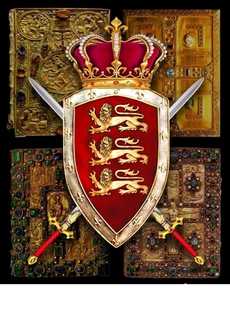Introduction:
Chinese medicine, with its rich history spanning thousands of years, has made significant inroads into the healthcare landscape of America and the world. Rooted in ancient wisdom and holistic principles, Chinese medicine offers a unique approach to health and healing that has garnered increasing interest and acceptance in Western societies. This article delves into the history, principles, practices, and impact of Chinese medicine in America and around the globe, highlighting its growing influence and integration into mainstream healthcare systems.

Definition of Chinese medicine

For hundreds of years, people in China and other parts of the world have used Chinese medicine, commonly referred to as Traditional Chinese Medicine (TCM), as a comprehensive healthcare system. This approach to health and healing is all-encompassing, focusing on the harmony and balance of Qi (vital energy) in the body, as well as the interdependence of the mind, body, and spirit. Chinese medicine uses a wide range of therapeutic modalities to treat a wide range of health issues and promote well-being. These modalities include food therapy, herbal medicine, acupuncture, and tui na (Chinese therapeutic massage).
Explanation:
Chinese medicine has become more and more well-known and accepted in the United States as a complementary and alternative medicine (CAM) adjunct to traditional medical care. In particular, acupuncture has gained widespread popularity and accessibility, with millions of Americans seeking treatments for a range of health conditions, such as pain management, stress alleviation, digestive disorders, and women’s health concerns.
The opening of TCM schools, integrative medicine centers, and acupuncture clinics in major American cities has made it easier for Chinese medicine to become part of the country’s mainstream healthcare system. Acupuncturists and herbalists with licenses must complete demanding coursework and training to fulfill licensing criteria and professional standards.
Comprehensive training programs covering traditional Chinese medical theory, diagnosis, acupuncture techniques, herbal pharmacology, and clinical practice are provided by accredited schools of acupuncture and Oriental medicine (AOM).

Philosophical Underpinnings:
Taoism and Confucianism, two ancient philosophical traditions that emphasize harmony and balance in health and the interdependence of humans and nature, are the foundations of Chinese medicine. These philosophical ideas guide Chinese medicine’s understanding of the body, mind, and spirit and serve as the foundation for its holistic approach to health and healing.
Diagnostic Techniques:
To identify the underlying patterns of discord in the body, traditional Chinese medicine uses special diagnostic techniques such as palpation, observation, questioning, and pulse and tongue diagnosis. These diagnostic instruments are used by practitioners to find Qi, blood, Yin and Yang, and organ system abnormalities. These findings help them develop treatment plans that are specific to each patient.
Holistic Approach:
One of the main characteristics of Chinese medicine is its holistic approach to health, which takes into account the interdependence of a person’s physical, mental, emotional, and spiritual well-being. Chinese medicine aims to treat the underlying causes of illness rather than just its symptoms, seeing the body as a dynamic system in constant contact with its surroundings.
Research and Integration:
Both domestically and globally, interest in and funding for Chinese medical research has increased recently. Through clinical trials and academic research, scientists are examining the effectiveness, safety, and mechanisms of action of acupuncture, herbal medicine, and other TCM treatments.
Cultural Adaptation:
As Chinese medicine has expanded throughout the world to various cultures and geographical areas, it has changed and evolved. Chinese medicine has integrated aspects of different healing traditions and medical systems while maintaining its fundamental beliefs and practices. This has resulted in the creation of a variety of hybrid holistic healthcare models.
Public Awareness and Advocacy:
Chinese medicine is becoming more widely recognized as a vital part of healthcare systems around the globe. In addition to addressing legislative and regulatory issues that impact practitioners and patients, patient advocacy groups, professional associations, and research organizations also contribute to the public awareness of Chinese medicine and its integration into mainstream healthcare.
Preventive medicine is highly valued in Chinese medicine, which focuses on keeping the body in a state of harmony and balance in order to delay the beginning of disease. People can take proactive measures to maintain their health and well-being, lowering their risk of chronic illness and increasing longevity, by following food therapy, lifestyle counseling, and frequent acupuncture sessions.
Integration with Conventional Medicine:
Chinese medicine is becoming more and more incorporated into traditional healthcare settings in a number of nations, including the US. Hospitals, pain clinics, and integrative medicine facilities frequently use acupuncture as a supplemental therapy for ailments like anxiety, nausea, and chronic pain.
Diversity and Cultural Competency:
Chinese medicine acknowledges the value of both in the provision of healthcare. In order to respect patients from different cultural backgrounds’ ideas, values, and customs, practitioners work hard to deliver care that is culturally sensitive. This entails modifying treatment strategies to suit cultural preferences and including cultural customs into comprehensive health care regimens.
Globalization and Standardization:
To guarantee quality and safety in practice, standardization and regulation are becoming more and more necessary as Chinese medicine spreads throughout the world. To encourage uniformity and professionalism in the area, international organizations like the World Federation of Acupuncture-Moxibustion Societies (WFAS) and the World Health Organization (WHO) have set standards and criteria for the practice of herbal medicine and acupuncture.
Collaborative Research and Education:
To improve our knowledge and application of Chinese medicine, practitioners, researchers, and educators must work together. To investigate the effectiveness, mechanisms of action, and best practices of Chinese medicine, research institutes, universities, and healthcare organizations work together on studies, clinical trials, and educational initiatives.
Accessibility and Affordability:
People from all socioeconomic situations should be able to obtain and purchase Chinese medicine. Aiming to improve underprivileged communities’ access to Chinese medicine, community acupuncture clinics, sliding-scale price schedules, and insurance coverage for acupuncture treatments
Global Health Challenges:
Chronic illnesses, mental health conditions, and environmental health problems are just a few of the problems that Chinese medicine may be able to help with. Integrative methods that bring Chinese medicine and traditional therapies together provide comprehensive answers to difficult medical issues and enhance population, community, and individual well-being. The focus that Chinese medicine places on preventative care and holistic health is consistent with the objectives of international health programs that support sustainable development and health fairness.
Integration into Sports Medicine and Performance improvement: Acupuncture and herbal medicine are two Chinese medicine modalities that are being used more frequently in sports medicine and performance improvement settings. Acupuncture treatments are sought after by athletes and sports enthusiasts for pain management, injury prevention, and performance enhancement.
Chinese medicine provides specialized care to meet the specific health needs of children and older persons, catering to both pediatric and geriatric populations. Treatments for common childhood illnesses include colic, allergies, and respiratory infections include pediatric acupuncture, herbal medicine, and dietary treatment. Chinese medicine modalities in geriatric care support mobility and independence, help manage chronic illnesses, and improve older individuals’ quality of life.
Cultural Preservation & Heritage Conservation:
As Chinese medicine becomes more well-known and popular throughout the world, initiatives are being made to protect and promote its traditional knowledge and cultural heritage. In order to ensure that traditional healing methods continue to be effective and relevant in the current era, organizations and institutions devoted to the cultural legacy preservation of Chinese medicine document, study, and spread these practices.
Cross-Cultural Integration:
Chinese medicine has impacted other healing traditions worldwide and been impacted by them. Chinese medicine frequently interacts with other conventional treatment systems, like Ayurveda, Native American medicine, and Western herbalism, in nations like the United States with diverse populations.
Community-Based Healthcare:
Chinese medicine frequently adopts a community-based strategy in which practitioners play a vital role in their local communities. In addition to promoting community empowerment and engagement, community acupuncture clinics, herbal pharmacy, and wellness centers offer underprivileged communities easily accessible and reasonably priced healthcare services.
Global Health Diplomacy:
Chinese medicine promotes worldwide collaboration and cooperation in healthcare practice, research, and education by acting as a tool in this regard. China encourages the integration of Chinese medicine into international health agendas, addressing shared health challenges and fostering international understanding and friendship through programs like the World Health Organization’s Traditional Medicine Strategy and the Belt and Road Initiative.
Chinese medicine has grown to be a well-liked destination for wellness and cultural tourism, luring travelers from all over the world to engage in customary therapeutic methods in their home nations. In order to promote health tourism and cross-cultural exchange, wellness resorts, retreat centers, and spa destinations provide immersive experiences in Chinese medicine, such as acupuncture treatments, herbal consultations, and wellness courses.

Components of traditional Chinese medicine:
Acupuncture:
In order to promote energy flow and restore equilibrium, acupuncture is a treatment that includes inserting tiny needles into particular body locations. Numerous medical diseases, including as pain, digestive problems, sleeplessness, stress, and reproductive difficulties, are treated with it.
Chinese herbal medicine employs medicinal herbs and botanical substances to treat a range of health issues. Based on the individual’s constitution, symptoms, and underlying patterns of disharmony, carefully chosen and blended herbal formulae are used. In order to improve treatment results, Chinese medicines are frequently combined with acupuncture.
Chinese massage, or tuina, is a type of therapeutic massage that uses a variety of manipulative methods, including rolling, kneading, and stretching, to ease pain, increase circulation, and release tense muscles. Tuina is frequently used to treat accidents, chronic pain issues, and musculoskeletal ailments.
Qi Gong and Tai Chi:
Qi Gong and Tai Chi are mind-body exercises that combine breathing techniques, meditation, and gentle movements to build Qi (vital energy), encourage relaxation, and enhance general wellbeing. These exercises help the body’s energy levels to balance, bolster the immune system, and lessen stress.
Moxibustion:
To warm and promote the body’s Qi and blood flow, dried mugwort, or moxa, is burned close to acupuncture points. It is used to boost circulation, heal cold conditions, and fortify the body’s resistance to disease.
Exercise and Lifestyle Advice:
Traditional Chinese medicine (TCM) practitioners frequently offer advice on lifestyle aspects that might affect health and wellbeing, such as exercise, sleep, stress reduction, and other factors. Individual needs are taken into account when making lifestyle recommendations, which may involve things like yoga, meditation, and food adjustments.
The links between the five elements .Wood, Fire, Earth, Metal, and Water, and the tissues, emotions, organs, and seasons are described by the Five Element Theory, a foundational idea in Traditional Chinese Medicine. Discord and illness can result from imbalances between the elements, each of which is linked to distinct attributes and purposes.
Tongue and Pulse Diagnosis:
TCM practitioners employ tongue and pulse diagnosis as diagnostic tools to evaluate the body’s blood and Qi conditions. While tongue diagnosis involves analyzing the color, coating, and form of the tongue to spot patterns of disharmony, pulse diagnosis involves feeling the pulse at different locations on the wrists to discover minor changes in pulse quality, rhythm, and strength.
Auricular Therapy:
Apex acupuncture, auriculotherapy, and other names for this type of therapy entail stimulating particular ear sites to address a range of medical issues. With acupuncture sites representing various organs and systems, the ear is thought to as a miniature version of the body. Body acupuncture is frequently combined with auricular therapy as a supplemental treatment.
Variations of Cupping Therapy:
Wet cupping and fire cupping are two of the variations of the classic cupping therapy, which uses glass or plastic cups to create suction on the skin. While fire cupping includes quickly heating the cups with a flame before placing them on the skin to produce suction, wet cupping entails creating tiny incisions on the skin before applying the cups to pull out blood and toxins.
Chinese Herbal formulations:
To treat certain patterns of disharmony in the body, Chinese herbal therapy employs intricate formulations made of several herbs that interact harmoniously. Herbal formulae are customized to meet the needs of each patient and can be prescribed in a variety of forms, such as raw herbs, powders, pills, or tinctures.
Common practices of Traditional Chinese Medicine:
Acupuncture:
Acupuncture stimulates Qi (vital energy) and supports the body’s inherent healing mechanisms by inserting tiny needles into particular body locations. Numerous ailments, including as pain, digestive problems, respiratory problems, hormonal imbalances, and mental disturbances, are treated with acupuncture.
Dietary Therapy:
The necessity of eating healthy meals that support the body’s natural energy and equilibrium is emphasized in TCM dietary therapy. The Five Elements theory and the concepts of Yin and Yang inform dietary suggestions, which may include certain foods, herbs, and cooking techniques based on a person’s needs.
Chinese massage therapy, or tuina, uses a variety of manipulative methods, such as kneading, rolling, and pushing, to ease muscle tension, increase circulation, and encourage the body’s natural healing processes. Tuina is frequently used to treat accidents, chronic pain issues, and musculoskeletal ailments.
Moxibustion:
To warm the body and encourage Qi and blood flow, dried mugwort, or moxa, is burned close to acupuncture points. Moxibustion is applied to boost the body’s immunity to disease, increase circulation, and treat cold conditions.
Exercise and Lifestyle Advice:
Traditional Chinese medicine (TCM) practitioners frequently offer advice on lifestyle aspects that might affect health and wellbeing, such as exercise, sleep, stress reduction, and other factors. To promote general health and balance, recommendations may include particular exercises like Qi Gong or Tai Chi in addition to lifestyle changes.
Auricular acupuncture:
Also referred to as ear acupuncture or auriculotherapy, this method of treating a variety of illnesses entails stimulating particular ear sites with needles, seeds, or magnets. In addition to body acupuncture, ear acupuncture is frequently utilized as a supplemental therapy.
Gua Sha:
Gua Sha is a traditional Chinese medicine procedure in which the skin is scraped with a smooth-edged instrument to increase blood flow, lessen inflammation, and soothe tense muscles. It is frequently used to relieve bodily pain, stiffness, and congestion.
Cupping therapy:
Toxins are drawn out, blood flow is improved, and healing is encouraged by applying cups to the skin and creating suction. Cupping is a common treatment for digestive problems, respiratory disorders, and musculoskeletal pain.
Targeting specific sites on the scalp, scalp acupuncture is a specialist form of acupuncture used to treat neurological illnesses such as paralysis, traumatic brain injuries, and stroke. The theory behind scalp acupuncture is that it stimulates the brain’s healing processes and helps the nervous system operate again.
Chinese Dietary Therapy:
To treat certain health issues and imbalances, TCM practitioners may recommend particular foods, herbs, and supplements in addition to general dietary guidelines. The necessity of consuming foods that are in season, locally sourced, and have a balanced flavor and energy profile is emphasized by Chinese dietary therapy.
Five Element Acupuncture:
This type of acupuncture is based on the ideas of Five Element theory and aims to balance the body’s five elements—Wood, Fire, Earth, Metal, and Water, in order to foster harmony and wellness. Five Element acupuncture aims to deeply restore equilibrium by treating each patient as a distinct blend of elemental forces.
Arrival in America:

Early Chinese Immigrants:
Attracted by the prospect of economic opportunity, especially during the California Gold Rush and the building of the transcontinental railroad, Chinese immigrants started coming to the United States in considerable numbers in the middle of the 19th century. These early immigrants carried their traditional medical practices—which included therapeutic massage, acupuncture, and herbal medicine—with them.
Treatment of Chinese Laborers:
Chinese healers, sometimes called “doctors” or “herbalists,” gave medical attention to other immigrants, treating a variety of illnesses with conventional Chinese medicines and methods. They were vital in providing care for Chinese laborers who had to deal with difficult working circumstances, communication difficulties, and restricted access to traditional medical care.
Creation of Chinatowns:
As Chinese immigrants settled in metropolitan regions, they created Chinatowns, which are tightly linked neighborhoods. These colorful enclaves developed into hubs of Chinese culture, trade, and social life. There, Chinese pharmacies and herbal stores coexisted peacefully with eateries, temples, and establishments serving the local Chinese population.
Cultural Integration and Exchange:
As non-Chinese Americans looked for alternate methods of health and healing, Chinese medicine started to catch their attention. The foundation for Chinese medicine’s later widespread acceptance and adoption was created by this cross-cultural interaction and assimilation into American society.
Creation of Professional Associations:
In order to further their practices and safeguard their interests, Chinese healers banded together to form professional associations and societies as interest in Chinese medicine expanded. A prominent illustration of this is the Chee Kong Tong (Chinese Consolidated Benevolent Association), which advocated the use of traditional Chinese medicine and functioned as a mutual help group for Chinese immigrants.
Legalization and Regulation:
Due to cultural prejudices and disputes with Western medical professionals, Chinese medicine encountered difficulties and discrimination in America. However, in the later part of the 20th century, acupuncture and herbal medicine were made legal and regulated in various states thanks to the efforts of Chinese healers and their friends. In order to guarantee the effectiveness and safety of Chinese medical procedures, licensing boards, educational requirements, and professional restrictions were set in place.
Integration with Mainstream Healthcare:
In America today, acupuncture and Chinese medicine in general are becoming more and more integrated. Acupuncture clinics, integrative medicine facilities, and hospitals provide acupuncture treatments for a range of medical concerns, such as women’s health difficulties, pain management, and stress reduction. To give patients comprehensive care, Chinese herbal medicine, nutritional therapy, and other modalities are combined with traditional medical procedures.

Challenges and Adaptations:
Cultural Stigma and Misconceptions:
Due to cultural unfamiliarity and prejudices against alternative healthcare approaches, Chinese medicine initially encountered skepticism and prejudice in America. The belief that Chinese medicine is “foreign” or “mystical” has made it difficult for patients and mainstream medical professionals to accept Chinese medicine. In order to overcome these obstacles, practitioners have launched outreach and education campaigns to dispel myths, increase understanding, and highlight the validity and scientific foundation of Chinese medicine.
Regulatory Obstacles:
State-by-state variances in licensure criteria, practice areas, and regulatory oversight have made the regulation of Chinese medicine in the United States a complicated and dynamic process. In particular, acupuncture has gradually been legalized and regulated; to guarantee practitioner competency and patient safety, licensing boards, educational requirements, and professional restrictions have been put in place. Disparities and inconsistencies continue to exist despite advancements in regulatory initiatives, which presents difficulties for practitioners pursuing recognition and licensure.
Integration with Conventional Medicine:
There are difficulties in coordinating care, working across interdisciplinary disciplines, and integrating Chinese medicine into traditional healthcare. Ineffective cooperation and integration between Chinese and Western medicine can result from differences in diagnosis techniques, therapeutic philosophies, and treatment modalities. In an attempt to address these issues, practitioners from various healthcare traditions are being encouraged to communicate, show respect for one another, and collaborate on decisions.
Access and affordability:
A number of issues, including geographic location, insurance coverage, and pricing, may make it more difficult for someone to receive Chinese medicine treatments, particularly acupuncture and herbal medicine. The concentration of TCM practitioners and acupuncture facilities in metropolitan areas sometimes results in limited access to care for underprivileged and rural people. Access discrepancies are further exacerbated by the lack of insurance coverage for herbal medicine and acupuncture. Initiatives to improve access, cost, and insurance coverage for Chinese medicine services are required to solve these issues.
Professionalization and Standardization:
Discussions concerning educational requirements, credentials, and professional identity have characterized the continuous processes of professionalizing and standardizing Chinese medicine in the United States. Concerns regarding the proper degree of education, the range of practice, and the incorporation of biological information into the curriculum for Chinese medicine have sparked debates and changes within the field. The goal of establishing standardized educational requirements, accreditation procedures, and professional certificates is to increase the legitimacy and credibility of practitioners of Chinese medicine.
Recognition and Integration:
Professional Accreditation and Licensing:
In order to recognize Chinese medicine as a respectable branch of medicine, proper accreditation procedures and practitioner licensing standards must be established. Acupuncture and traditional Chinese medicine (TCM) practitioners need to fulfill certain educational requirements, clear licensing tests, and follow professional rules of behavior in order to lawfully practice in many jurisdictions. Establishing guidelines and guaranteeing the caliber and security of Chinese medicine services are important tasks for regulatory organizations and accreditation authorities.
Collaboration between Chinese medicine practitioners and conventional healthcare professionals is facilitated by the integration of Chinese medicine into mainstream healthcare facilities, including hospitals, clinics, and university medical centers. This process is known as institutional integration. Programs and departments dedicated to integrative medicine combine the knowledge and abilities of Chinese medicine practitioners with the competence of Western-trained physicians to provide a comprehensive approach to patient care. Through this collaborative strategy, patients can receive individualized therapy options that cover a wide range of needs.
Insurance Coverage and Reimbursement:
Ensuring that Chinese medicine is affordable and easily accessible for patients depends on insurance companies and other healthcare payers acknowledging its legitimacy. Acupuncture and other Chinese medicine modalities are covered by Medicaid, Medicare, and health insurance plans in various countries, including the US. This is dependent on state laws and specific policy requirements. Growing insurance coverage and reimbursement for Chinese medicine services has been made possible in large part by advocacy work undertaken by patient advocacy groups and professional organizations.
Studies and Practices Based on Evidence:
In order for the scientific and medical societies to accept Chinese medicine, a strong body of evidence demonstrating its efficacy and safety must be gathered. Empirical data supporting the efficacy of acupuncture, herbal medicine, and other Chinese medicine modalities for a range of medical disorders can be found in research papers, clinical trials, and systematic reviews. Chinese medicine practitioners can improve their reputation and encourage cooperation with mainstream healthcare specialists by following recommendations based on evidence.
Cultural Competency and Sensitivity:
Acknowledging the value of Chinese medicine requires acknowledging its traditional origins and philosophy as well as its cultural importance. To guarantee that patients from a variety of cultural backgrounds are treated with respect and equity when incorporating Chinese medicine into healthcare settings, stakeholders, legislators, and healthcare practitioners must exhibit cultural competency and awareness. Healthcare practitioners can better negotiate cross-cultural encounters and advance patient-centered care by utilizing training programs, continuing education courses, and cultural competency requirements.
Global Impact and Cooperation:
Especially in Asia and other areas with sizable Chinese populations, Chinese medicine has had a major impact on healthcare systems and procedures in many nations. In order to offer patients comprehensive care, traditional Chinese healing modalities have been modified and incorporated into regional healthcare systems alongside Western medical procedures. The global understanding and practice of Chinese medicine have been further enhanced by international collaboration and exchange in research, teaching, and clinical practice.
Persistent Development and Innovation:
Chinese medicine keeps developing in response to new scientific findings, shifting societal norms, and shifting healthcare need. The potential for Chinese medicine to improve health and well-being worldwide is growing thanks to developments in research, technology, education, and multidisciplinary teamwork. Chinese medicine’s influence is projected to increase as public knowledge of and acceptance of it rise, influencing healthcare trends that will affect future generations.
Conclusion:
- All Posts
- Uncategorized

Dr. Daniel Davidson, MD, MBA Introduction: The goal of success for businesses nowadays is to establish a global brand because…

Dr. Daniel Davidson, MD, MBA Introduction: Stem cells have captivated the imagination of scientists and the public alike for their…

Dr. Daniel Davidson, MD, MBA Introduction: Platelet-rich plasma (PRP), fat grafting, and dermal fillers made from natural sources are examples…
